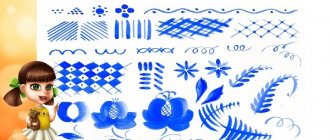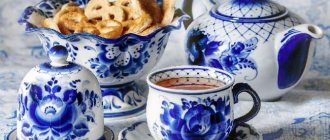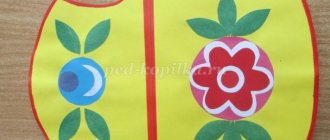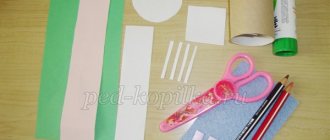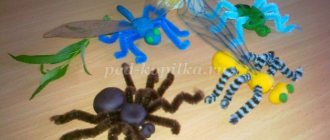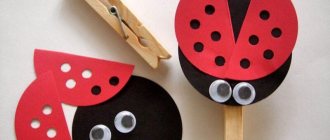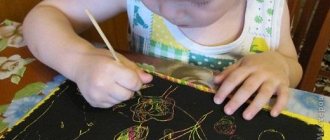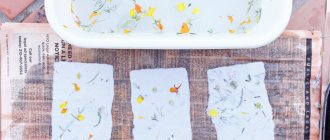The art of the people and their creativity invariably reflect their identity and spiritual wealth. One such widely known Russian folk craft is Gzhel. The unsurpassed art of filigree painting on clay products and the peculiarities of the design allow us to confidently call Gzhel the heritage of Russia. This folk craft with a long history is still very popular today. Gzhel not only pleases the eye with its unique and intricate ornamentation, but also immerses you in a mysterious and intriguing fairy-tale world.
History of Gzhel and its origins
The name of this folk craft is associated with the village of Gzhel, located in the Moscow region. This place is very picturesque, but not fertile. For a long time, the residents of this village tried to engage in agriculture. However, their time was wasted. All the failures were associated with a huge layer of white clay that lay almost on the surface. After it became known about the high quality of this clay and the fact that it makes excellent porcelain, a folk craft associated with the production of various pottery products was born. Local craftsmen created not only dishes, but also children's toys. The first pottery products of this area have been known since 1320.
Gradually, the original drawing, unique painting and amazing originality of Gzhel became very popular, and individual workshops merged into large productions.
There is an opinion that at first this folk craft was called “zhgel”, and then for ease of pronunciation they switched to the word “Gzhel”. The very name of the village meant “burn.”
Progress of the lesson.
Teacher's story: Gzhel is an ancient village in the Moscow region. Already in the 18th century. Gzhel's art reached its peak. In the 19th century There were 50 porcelain and faience factories and about 40 porcelain painting workshops.
Reading of I. Kadukhin’s poem “ Gzhel ”
Porcelain cups, candlesticks, clocks,
Animals and birds of unprecedented beauty,
The village in the Moscow region has now become famous,
Everyone knows its name.
Children (in chorus)
-
Gzhel .
Now let's look at pictures of how craftsmen paint Gzhel dishes , because in order to make beautiful dishes, Gzhel craftsmen cast a mold for Gzhel products , seal the seams so that the product is even. And master painters hand-paint each item.
Today you and I will also be master painters and paint a plate for our beloved grandmother.
Features of the Gzhel fishery
The difference between Gzhel and other folk crafts, which allows us to confidently call it a unique, distinctive, inimitable and original part of Russian artistic creativity, is the unusualness of the painting and, of course, handmade work. The main feature of Gzhel is a pattern in blue tones on a snow-white background and a pattern representing a complex floral pattern. Thanks to the contrast of cobalt paint and a white background, a unique brightness of color is created, which invariably attracts the eye and makes you admire the master’s work again and again.
In addition, the design is applied under the glaze and only then the product is fired. Cobalt is one of the few paints that can withstand oven temperatures of 1300 degrees.
Variety of Gzhel shapes
Gzhel products are distinguished not only by a huge variety of designs and original ornaments, but also by a wide selection of shapes.
The world of Gzhel is represented by such objects as:
• Tea pairs • Sets • Flower vases • Teapots • Sugar bowls • Jam sockets • Samovars • Souvenirs
A wonderful and unusual gift in addition to the above are: damask, plaque, kumgan.
Shtof is a tetrahedral-shaped vessel with a short neck and a stopper. In the old days it was used to store strong alcoholic beverages. The plaque, made using the Gzhel technique, is a painted decorative plate and serves as an excellent interior decoration. Kumgan is a vessel with a narrow neck, thin spout, handle and lid. Previously, it was used to wash hands and feet, and now, thanks to the masters of Gzhel, it is a wonderful and memorable gift.
Gzhel is also represented by a rich variety of souvenirs. Among them are figurines of animals, heroes of folk tales, snowmen, fish, nesting dolls, etc. Some of the products are dedicated to representatives of various professions, made in the form of the first leaf of a calendar, or have the shape of a bell.
Method of manufacturing Gzhel handicrafts
Creating products for Gzhel requires from the master extraordinary precision, painstakingness and an incredible flight of imagination. The dishes can be made of porcelain or majolica. The difference is that porcelain is white clay. It is more fragile and thin. Majolica is made from red clay and is more durable.
The entire manufacturing process can be divided into five stages. These include:
• Creation of a blank • Preparation for painting and first firing • Control and rejection of products • Painting • Second firing
The preparation process involves creating a porcelain or majolica mold from clay according to the artist’s sketches. This preparation is made on a pottery wheel, but not with your hands, but with special tongs. After the plaster mold is ready, liquid porcelain mass is poured into it, which gradually hardens. Gypsum absorbs moisture well, so porcelain hardens quickly.
An important feature of creating Gzhel is that all elements of the dishes, from handles to relief patterns, are made in different forms. This requires special care and attention from the master.
The next stage is preparation for painting. It includes polishing the product and firing it.
In order for the design to lie smoothly and neatly, each product is first cleaned with a special knife and polished. This process is carried out manually. Then the attachment points of various parts of the product are washed away, and the remaining irregularities are smoothed out using a foam roller. After this, the product is sent to the kiln for firing, which lasts about eight hours.
After firing, it is necessary to monitor the quality of the product and the presence of defects in it. They are identified using a fuchsin solution. This substance accumulates in the uneven surfaces of porcelain and turns bright red. Thus, unevenness or poor-quality joints in the product become visible. Next, imperfections are removed by roller sanding or washing. If the defect cannot be eliminated, the product is sent to scrap and melted down.
After this, painting begins. Each master has his own unique method of applying patterns and signs his work at the end. Then, the supporting parts of the product are treated with paraffin. To do this, the master manually dips the dishes into a bath of hot paraffin. Then, the product is dipped in glaze and sent for a second firing. It lasts quite a long time, eighteen hours. It is thanks to underglaze painting that the color saturation remains the same for a long time. Such products can be washed not only by hand, but also in the dishwasher.
Thus, each stage of the work is performed manually. Such work is very painstaking, therefore, mostly women work in Gzhel factories.
After firing, the product takes on its final form and is subject to subsequent packaging.
CHILDHOOD GUIDE
Summary of direct educational activities “Fairytale Gzhel”
for children of senior preschool age
Bryleva Anastasia Aleksandrovna, teacher of MKDOU No. 16, Novosibirsk
Many scientists wrote about the importance of decorative art in raising children: A.V. Bakushinsky, P.P. Blonsky, T.S. Shatsky, N.P. Sakulina, Yu.V. Maksimov, A.P. Usova, R.N. Smirnov and others. They noted that art awakens the first bright, imaginative ideas about the Motherland, its culture, contributes to the education of a sense of beauty, and develops the creative abilities of children. The visual activity of a child is closely connected not only with individual functions (perception, memory, thinking, imagination), but also with the personality as a whole. It shows the child's interests and temperament. In the process of visual activity, manual skills and hand-eye coordination develop, which are necessary to prepare the child for writing.
Gzhel painting is very beautiful, but very complex, so in class we learn to draw the most basic stripes and lines in order to learn how to draw more complex elements in the future. Our classes are structured according to the principle: from simpler to more complex. From lesson to lesson we develop a desire to work creatively and independently. Samples of works by outstanding Gzhel masters help us with this.
Objectives: 1. To introduce children to the arts and crafts of Gzhel. 2. To develop practical skills and drawing skills from a sample. 3. Develop interest in the art of Gzhel masters. 4. Contribute to the development of aesthetic taste and imagination.
Progress of direct educational activities:
Educator: Children, do you like to travel? Today we will take a journey into the world of beauty, goodness, into the world of amazing creations of folk craftsmen. Early in the morning the postman brought a parcel. The address is written here: Russia, Novosibirsk, kindergarten “Forget-Me-Not”, group No. 14. Come on, you and I will open it together and see what they sent us. Shall we open it?
Look, there are a lot of different items here. Let's get them out and look at them. Here are the toys. How cheerful, bright, and elegant they are. How beautiful is this girl-soul: Scarlet cheeks are burning, amazing outfit, The kokoshnik sits proudly. The young lady is so beautiful!
But the turkey is smart. He's all so foldable. The big turkey has all his sides painted.
Educator: Where did they send them to us from? (Children's answers). What do Dymkovo craftsmen make their toys from? (Children's answers).
Guess the riddle: Snowy white dishes Tell me: where are you from? Apparently it came from the North and blossomed with blue, blue, tender, beautiful flowers.
Educator: Children, we are going on a journey to see folk craftsmen in a blue-blue fairy tale. Why is it called that? Now you will understand for yourself. It was a long time ago. In a certain kingdom, in the Russian state, not far from Moscow, among dense forests stood the village of Gzhel. Brave and smart, kind and hard-working people lived there. For a long time they made dishes from white clay. Even the name of the village was associated with the word “burn”, because clay products were necessarily fired in a kiln at high temperature. And then one day they got together and began to think about how best to show their skills, to please all the people and glorify their land. We thought and thought and came up with an idea. We decided to sculpt dishes the likes of which the world has never seen.
Each master began to show his ability. One made a teapot: the spout was in the shape of a cockerel’s head, and there was a chicken on the lid. Another master looked and marveled, but did not sculpt the teapot. He saw a bull on the street and sculpted it. The third master marveled at such beauty, and he himself came up with an even better idea. He made a sugar bowl in the shape of a fabulous fish. The fish smiles, waves its tail, and shakes its fins. The sugar bowl turned out wonderful.
We began to think further. How to decorate such intricate dishes? We went home. They walk along the road and look. And all around there is fabulous beauty, the blue is spreading: a high blue sky with white clouds, a blue forest can be seen in the distance, the blue surface of rivers and lakes, and a white fog spreading over them. So they decided to transfer this blue to white porcelain. And everything that the brush paints becomes blue and cyan. And flowers, and people, and birds, and grass. People fell in love with the elegant tableware, and they began to affectionately call it “Gentle Blue Miracle - Fabulous Gzhel.” Gzhel craftsmen glorified their beloved region throughout the world and told everyone what skilled craftsmen live in Rus'.
Educator: Did you like the blue fairy tale? (Children's answers). Conversation based on a fairy tale. - What kind of trade is this tale about? — What do Gzhel craftsmen make their products from? (Made from clay). — What paint do masters use in Gzhel painting? (Blue). — What patterns do craftsmen decorate their products with? Showing demonstration images of Gzhel elements: wide and narrow stripe, dot, wave, bush, petal, mesh, leaf, droplet.
Practical part: Educator: And now you and I will also visit a fairy tale and feel like real Gzhel masters. But first we will rest a little.
Physical exercise Our blue flowers are opening their petals. The breeze breathes slightly, the petals sway. Our blue flowers cover the petals. They quietly fall asleep, shaking their heads.
Educator: I have a set of Gzhel dishes, but they are only white, not painted. Can you help me paint them? And so that your work goes well, I’ll play some music for you. After all, music inspires and encourages creativity. An audio recording of the song “Forget-me-not Gzhel” is played, music. Yu. Chichkova, lyrics. P. Sinyavsky. Educator: Where will you start? (Children's answers). Let's get to work. (Providing individual assistance to children).
Sources: Book “This ringing fairy tale is Gzhel”, 1992. https://www.bestreferat.ru/referat-305222.html https://moikompas.ru/compas/gzhel
Fairytale mosaic Painting of the Gzhel rooster Fairytale living room Dymkovo toy >
Features of Gzhel painting
The uniqueness, grace and incredible beauty of Gzhel products are given by the peculiarities of their painting. These include:
• Snow-white background • Deep blue pattern • Surface glazing • Diverse and complex floral patterns • Handmade
The use of only two colors and the uniqueness of the images make it possible to create unique masterpieces of folk art, therefore, there are no two identical products from Gzhel.
The pattern of the future product is first carefully thought out, and only after that is applied to the porcelain surface. Ancient masters applied the drawing immediately, without a preliminary sketch. They drew their inspiration from nature or from pictures of folk life. Painting is done with a solution of cobalt oxide, which after firing acquires a deep blue color. It is applied with special squirrel brushes.
There is another type of painting in the Gzhel style, which is called majolica. Its peculiarity is that not one color, but five, is applied to the snow-white surface.
Many centuries ago, Gzhel masters tried to reflect in their art their vision of the world around them, pictures of urban and rural life, inexplicable natural phenomena, their thoughts and fantasies. Based on this, the general style of painting can be divided into three main groups:
• Ornamental • Floral • Subject
The ornamental pattern is original, unusual and a certain association can be traced in it. The most common ornamental patterns are: drops, tendrils, blades of grass, pearls, combs. In addition, a checkered pattern is traditionally applied along the side and border, which is a chain of blue squares.
The plant pattern is considered classic for Gzhel. It is usually quite stylized, but you can always distinguish one plant from another. Most often, craftsmen depict berries, blades of grass, cuttings, and flowers on Gzhel products. Garlands of berries on porcelain can easily be intertwined with ears of wheat or a riot of floral patterns. At the same time, gooseberries can be easily distinguished from currants.
Often ornamental painting is combined with a floral pattern.
The plot drawing was one of the first to appear. It presented pictures from the life that surrounded the master. It could be beautiful landscapes, fun fairs, sleigh rides, colorful natural phenomena.
Lesson summary “Introduction to the art of Gzhel”
Lyudmila Nizderka
Lesson summary “Introduction to the art of Gzhel”
Introduction to the art of Gzhel.
— get acquainted with Russian folk painting of Gzhel masters , with its characteristic features and technique of Gzhel masters , with its characteristic features and creation technique. Master painting techniques. Instill love for the Motherland and folk art .
Materials for the lesson : objects with Gzhel painting , book “Blue Flowers of Gzhel ”
N. Suryaninova, publishing house
"Malysh"
M. 1986 or any other. Tables with elements of painting, blue gouache, brushes 8 and 3 numbers, pokes, prepared papier-mâché plates, painted with white gouache.
-observation of objects of Gzhel painting , identification of characteristic forms and features of painting.
-look at the illustrations in the book “ Gzhel ”
— make sure of the variety of shapes and paintings.
— verbal dictation and demonstration of blue gouache painting techniques.
Modern masters of Gzhel
Thanks to the creative heritage left by the ancient masters of Gzhel, their modern followers were able not only to revive this great folk craft, but also to introduce into it notes of modern art, features of life and the originality of the views of the present time. At the end of the 19th century, modern Gzhel began to gain popularity, however, they painted mostly simple figures and the design was not as intricate as that of the ancient masters. Gradually, porcelain sculpture and decorative vases began to be mastered, and new original types were added to the traditional Gzhel pattern.
Thus, thanks to modern masters, there was a revival of Gzhel, it acquired new interesting techniques, exciting plots and a special style. Now these products are widely in demand all over the world and are an integral part of Russian folk art.
Gzhel was and remains an unsurpassed symbol of the enormous creative imagination and highest skill of the Russian people. This craft is a kind of history book, which carefully preserves the imprint of the time in which it was created, immerses us in a world full of incredible miracles and unique colors, and tells about how our ancestors lived. However, the popularity of Gzhel lies in the fact that it is capable of displaying pictures of modern times, helping people to look at themselves from the outside, to see how beautiful and amazing the world around them is.
